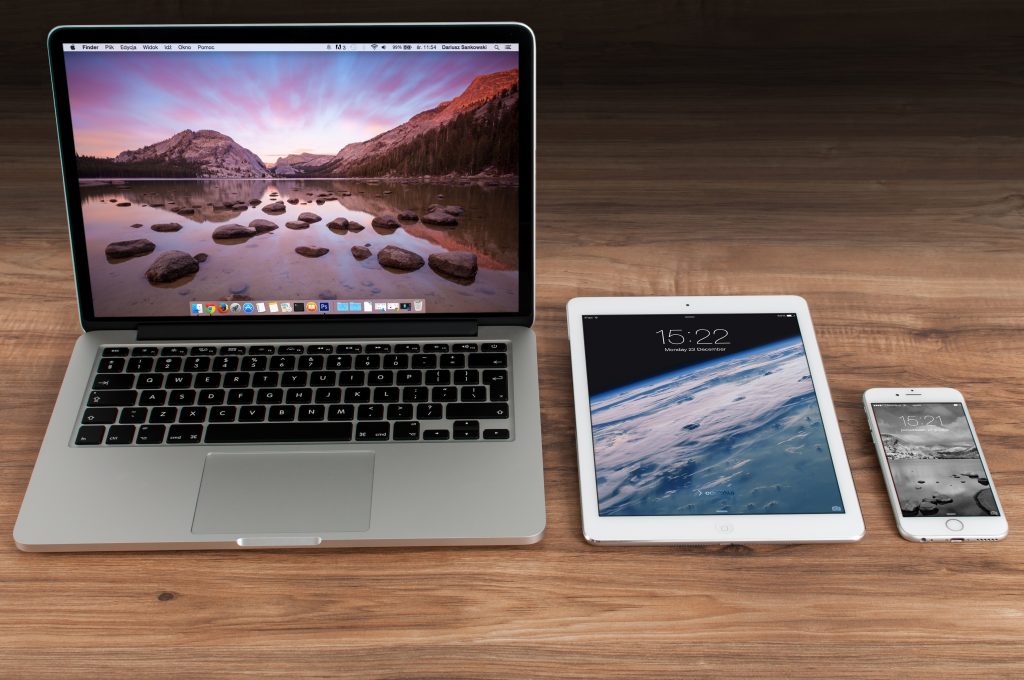Three Technologies That Will Revolutionize Travel WiFi In 2021 And Beyond

A fundamental change is coming to travel, specifically how we stay connected on the go. COVID is having it’s impact on where we go, how we get there, where we stay and even what we do. That change, combined with the a revolutionary change in technology means travel WiFi will never be the same.
In this article we dive into five technology changes will that fundamentally change travel WiFi forever. We don’t use the term revolutionary lightly, these changes will have a fundamental impact on how we travel. We will touch on each of these technologies, why they will be revolutionary and most importantly what it means for you, and why you should care even if you are not a “technologist”.
Satellite Internet
No change is more likely to fundamentally change travel WiFi than satellite internet. While still a fairly immature technology with limited reach or specific use, at maturity this will commoditize the internet like we’ve never seen.
What makes satellite internet such a game changer? Two things. First, the expectation is in the coming years it will provide worldwide high speed internet. From National Parks to Machu Picchu, reliable high speed internet will be available at any location. Starlink, the satellite internet company backed by Tesla founder Elon Musk, is already functioning with results showing internet that is faster than cellular.
The second is the equitable nature of unhooked high speed internet. There is a massive divide in the quality and speed of rural internet in the US and even worldwide. Much like cellular helped bridge the gap in semi-rural areas, satellite internet promises to make everywhere a potential part of the digital economy. The FCC recently signed approved $900 million dollars in subsidies to help bridge the urban/rural digital divide.
Satellite Internet Limitations
Despite all of the revolutionary benefits, there remain a few challenges.
First, satellite internet will require a dish to use, similar to what you may remember from DirecTV days. This means if you are imaging satellite internet being in the palm of your hand or in a hotspot style device, we’re still a ways from that. However, solutions will soon come to market that allow RVs or remote work locations to quickly deploy. So it’s impacts on the work from anywhere and RVers will be sooner, rather than later.
Imagine having fast internet no matter where you park your RV. Or having an internet dish you can take with you to your Airbnb or second home in the mountains with no loss of connectivity or productivity.
Another limitation is while Starlink is currently in early live user sales, with several other players coming to market soon, coverage still isn’t yet global. It isn’t even national. Starlink only covers the northern US and southern Canada. This footprint is expected to extend to all of the US and much of North America later in 2021 and 2022 with additional satellite launches.
Lastly while Starlink and other providers promise gigabyte internet speeds like you see in highly connected urban areas, the real world results are not there. Still, early users have seen 30-100MB speeds, which is faster than 4G cellular and even many cable internet connections. So the impact for rural users who have limited or no choices will be immediately felt, even if the desired high speeds are still to come.
5G Cellular
More than meme and conspiracy fodder, 5G or “5th generation” cellular will have a dramatic impact on travel WiFi. Much like 4G internet created a the ability to really work on the go and home like entertainment experiences, 5G promises to bring the fully connected life on the go.
5G promises speeds up to 10 times faster than 4G, making it competitive with some of the fastest home internet connections. In fact, 5G is so fast some companies such as Verizon are selling it as a complete home or small business internet solution.
Most consumers will hear about 5G when buying a new cell phone. While media intensive smartphones will absolutely benefit from the higher connection speeds the revolution with 5G will actually come from it’s ability to support multiple devices with a single 5G connection. 4G, as powerful as it is, often only really supported 1-2 devices.
The average consumer now travels with multiple devices per person, whether it is for business (cellphone, laptop, media device/tablet) or personal (cellphone, laptop, streaming stick). This means each device requires its own cellular or WiFi connection, leading to you quickly exceeding the capabilities of your 4G hotspot. If you are supporting a small business team or a taking your family on a trip, you easily will overwhelm a 4G connection. 5G could make this a thing of the past.
5G, much like 4G also has some equity benefits for users. 4G brought the digital economy and connectivity to rural locations and allowed digital nomads to literally travel while they work. Having the additional speed of 5G will make digital nomads even more competitive with their fixed location peers.
5G Internet Limitations
Despite all of the revolutionary benefits of 5G, there remain a few challenges.
First is that 5G deployment is still largely in urban areas. So don’t expect to see the benefits when at the beach or in the mountains immediately. Still, major US carriers expect to have 5G rolled out to most of their towers by the end of 2022, with most mid and large cities having full coverage by the end of 2021.
Second, 5G has more limited range and in building penetration. What this means is that while you may get a great 5G connection if you are outside near a tower, your real world experience inside a hotel or office building may not be much better than 4G. Worse, the experience you get may vary based on which carrier you choose as there are different types of 5G technologies that have more pronounced limitations.
Lastly, 5G devices and service are expected to be more expensive. To promote early adoption many of the big carriers have not added significant 5G surcharges, but expect prices to increase. Some carriers have even begun creating 5G only plans. Also, while 5G gives you more speed, most carriers are not giving your more bandwidth, or total data you can consume in a month. This means you burn through your data more quickly. This may lead to forced slow downs, known as throttling, or additional costs to buy additional high speed data.
Streaming Services and Smart Device
While cord cutting has been a stable in our homes for a few years, the impacts of COVID will accelerate the adoption of how we consume media and TV when traveling. In years past appointment television happened on cable, and most hotels had cable with the popular channels. However, a revolution in TV happened in 2020. The majority of appointment television is now on streaming services such as Netflix, Disney Plus and others.
The impact to travel is now real. When we return to the road in 2021 and beyond we want our favorite shows to go with us. While hotel chains such as Marriott, Hilton and others are slowly beginning to roll out internet TVs they are significantly behind where we are at home as consumers. And as appointment TV moves online many of us will not want to wait until we are home from traveling at the end of the week to catch up, more and more people are taking streaming sticks with them.
Another trend starting to take off is taking smart devices with you when traveling. As we become attached to our smart devices at home, we desire those experiences when traveling. Sonos recently released it’s Sonos Move as a travel centric smart speaker, though it has some significant limitations. Amazon now has Alexa in car and even in hotels. Some hotels chains are evening adding in room smart assistants.
Streaming and Smart Device On The Go Limitations
There are some significant challenges with taking streaming sticks and smart devices with you when traveling.
First is that most streaming sticks and smart devices are not designed to work with different WiFi networks. The simply don’t offer an easy way to switch between the different hotel, airbnb or RV wifi networks you will visit as you travel. If you only take them with you for the occasional week long trip, the effort to reconfigure them isn’t a big deal. However, if you travel regular for work or business, or if you have a lot of devices this could lead to hours of wasted time. Or you may just leave your devices at home.
Another is that many hotel, RV park and airbnb networks use captive portals to restrict access and capture information. Most streaming sticks, gaming consoles and smart devices don’t even work with these captive portals. And even if they do, again if you are bringing more than 1 or 2 devices or travel in a bigger group with lots of devices, you’ll spend an awful lot of time getting them connected to the WiFi.
While you can work around some of this with a cell phone hotspot, again with multiple devices or a lot of streaming you can expect to burn up a substantial amount of data.
Because of these limitations, travel routers and dedicated hotspots with increased capabilities are likely to be a key piece of this revolution. Travel routers allow you to connect many devices quickly to these different WiFi networks when you travel without needing to reconfigure all of your devices at each location.
Bonus: Machine Learning and AI
For those who are not regular followers of technology this one may come with some thoughts or even concerns. But make no mistake, AI and machine learning is EVERYWHERE in our technology lives, whether we think so or not.
AI and Machine Learning will specifically impact our lives as we travel and stay connected in two significant ways. First is that our smart devices increasingly rely on AI and machine learning to guide us through our lives. Reminders, directions, traffic, and even preferences are all determined by learning our patterns. Anyone who has used Google Maps or a similar tool when traveling knows exactly how beneficial it is.
Secondly as we depend on better connectivity and security, AI and machine learning can help keep us connected more reliably. Machine learning is already being implemented by many cellular companies to improve our connectivity. Expect this accelerate in 2021 and the impact will be real.
Another area AI and machine learning will impact our lives when traveling is WiFi. One of the biggest challenges with connectivity on the go is inconsistent or lack of reliability. Unlike at home or in the office where you have control of the environment, internet on the go is in the hands of the hotel, coffeeshop, airbnb or RV park you are at. Any regular traveler knows the WiFi experience can be downright bad. It is more often inferior rather than superior. Machine learning is already learning how to make our WiFi connections better by learning what makes WiFi poor and automatically adjusts to ensure you have a more consistent experience.
The impact to travel will be truly revolutionary.
